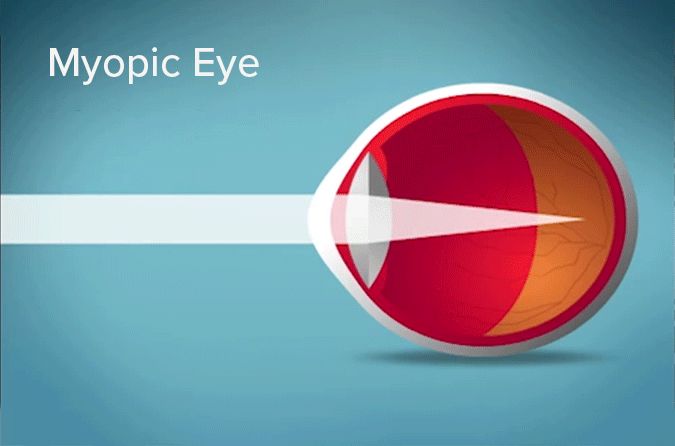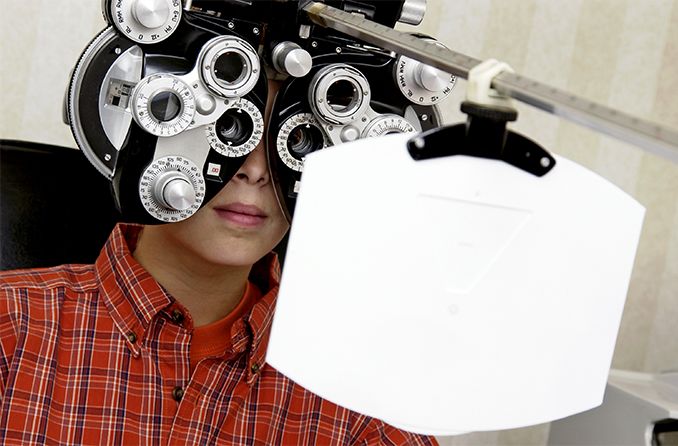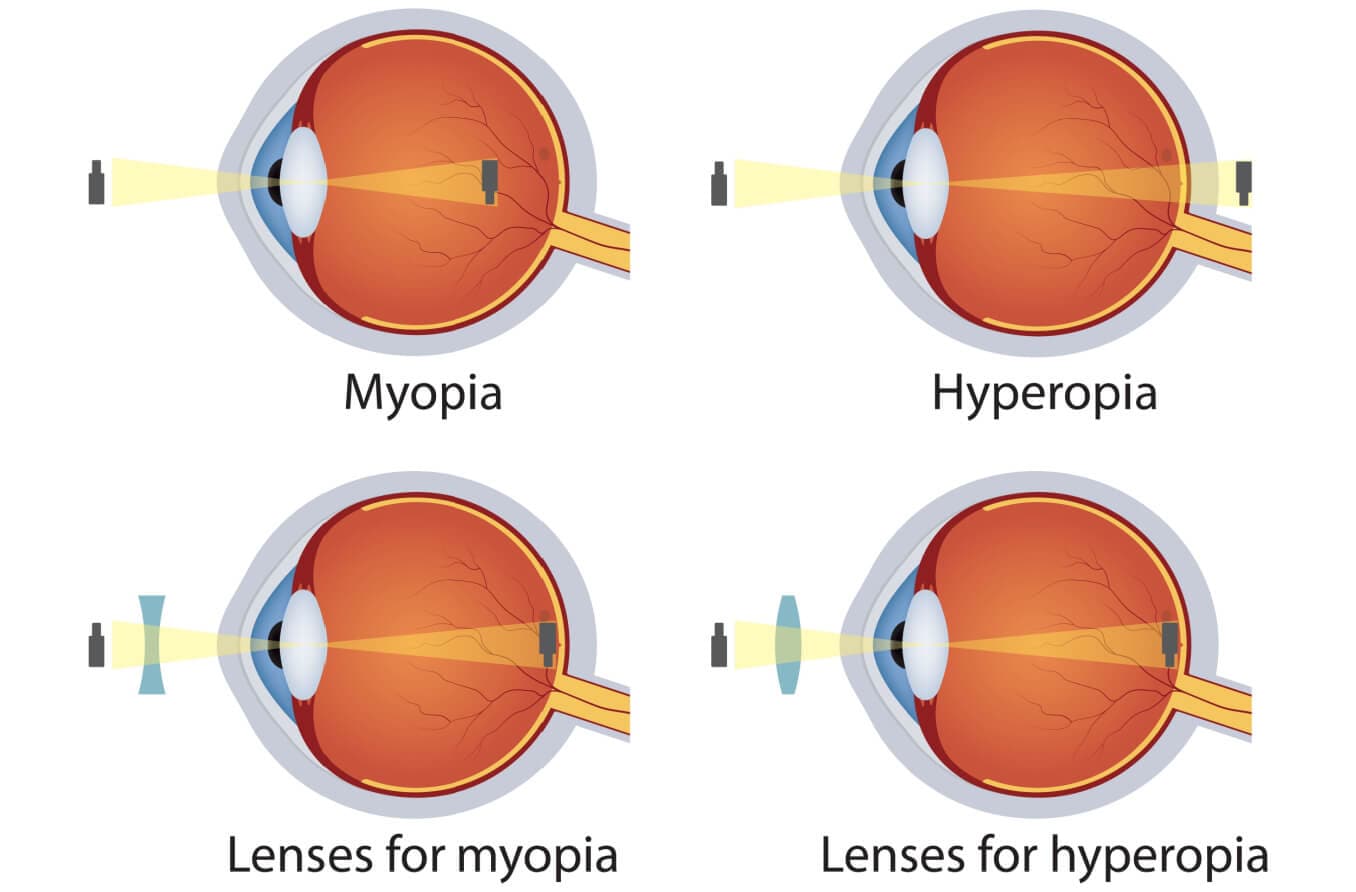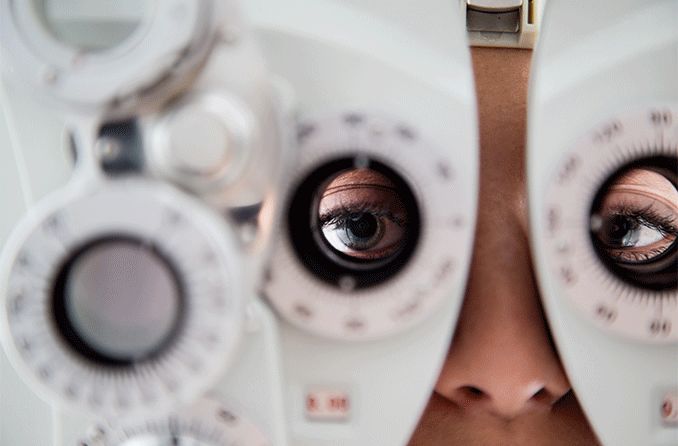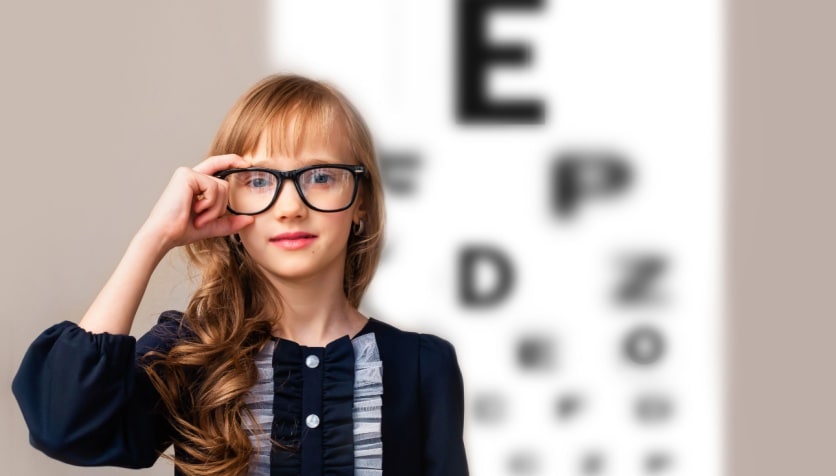The most common form of nearsightedness is called axial myopia. It occurs when the distance from the cornea to the back of the eye (the axial length) is too long relative to the focusing power of the cornea and lens. As a result, light focuses in front of the retina rather than on the retina.
This causes blurred vision at a distance, or myopia — also known as nearsightedness.
Nearsightedness is often divided into two categories. Axial myopia and refractive myopia. Refractive myopia is caused by an excessive amount of focusing power in the eye relative to the axial length. This type of myopia is caused by too steep a curvature of the cornea or lens, or the position of the lens.
Axial myopia is the result of excessive elongation of the eye. In other words, it is due to the eyeball being too long.
How does the eyeball grow?
Newborn babies have eyes that are about 16 mm in diameter. Their eyeballs grow to about 19mm in the next several months of life. As a child grows, the length of the eyes should stabilize at about 24-25mm in the teen years.
Heredity and environment each play a role in becoming nearsighted according to most recent studies. Research has shown that as the eyes develop, the axial length and focusing components of the eyes must maintain a balance to ensure clear vision. This process is called “emmetropization.”
If this process does not occur properly, the eye can elongate too much — resulting in axial myopia.
SEE RELATED: What is emmetropia?
What causes the eyeball to become too long?
The answer to this question has been widely researched. Scientists have evaluated the results from many studies and, while nobody knows for sure, there are a few theories.
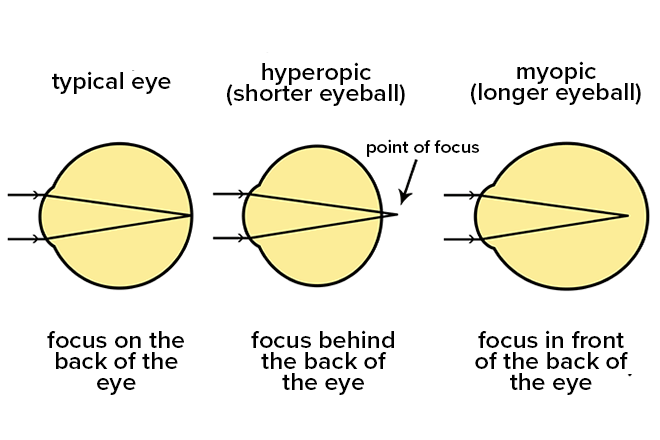
Not getting enough outdoor exposure
According to scientists, an important risk factor for myopia development is the number of hours an individual spends outdoors. It has been reported that a lack of daylight exposure is strongly associated with excessive elongation of the eyeball. A 2019 review of 13 research studies investigating the relationship between outdoor light exposure and myopia found strong support for this theory.
Rates of myopia, myopic prescription and the amount of eyeball growth appear to be higher in children who have less outdoor light exposure. Spending more time outdoors seems to have a protective effect against the eyeball growing too long, which results in axial myopia
Near work done at close distances for extended periods of time
The International Myopia Institute (IMI) has identified risk factors that may contribute to the risk of developing axial myopia. One of these risk factors is near work done at very close distances (< 20cm) for extended periods (more than 45 minutes).
A number of studies have pointed to excessive near work at close distances as a possible risk factor for myopia development. But, the data correlating too much near work and myopia has been conflicting. While researchers have found that there is an association between extended near work at close distances, they are not sure whether the near work itself is causing it.
A proposed mechanism of hyperopic defocus
Some studies have shown that lack of a clear retinal image can induce changes in the length of an eyeball. Leading researchers associated with the IMI have been investigating how the quality of the retinal image plays a role in axial eye growth. This proposed mechanism for axial myopia is called “hyperopic defocus.”
To understand hyperopic defocus, it is helpful to visualize how myopia correction works. When a child wears correction for myopia, light rays focus directly on the center of the retina (the macula) and the brain receives a clear image. However, because the eyeball is curved, light rays in the periphery of the retina come to a focus behind the retina (termed hyperopia). As a result, light focuses behind the peripheral retina — this is hyperopic defocus.
Hyperopic defocus has been associated with increased axial length. Studies have found that the inverse of hyperopic focus, “myopic defocus,” results in a shortening of axial length. Research and development applying this potential strategy for myopia control is underway.
Is there anything that can be done to keep the eyeball from growing too long?
Both genetics and environmental factors seem to play a role in ocular growth. While heredity factors are difficult to control, there is growing evidence that environment and lifestyle can influence the development of axial myopia.
Slowing down the growth of the eyeball is important because high axial myopia (greater than –6.00 D) leads to an increased risk of vision impairment due to complications.
The lengthening causes the retina and back of the eyeball to stretch. This results in thinning and degenerative changes to the retina, choroid and sclera. These changes can lead to permanent vision impairment and blindness.
The research into what causes this type of myopia is constantly evolving. Lifestyle changes and strategies to slow myopia progression may help to slow axial elongation of the eyeball and decrease the risk of complications related to myopia.
Some of these recommendations include:
Get two hours of outdoor exposure every day.
Take visual breaks during long periods of near work and ensure that your reading material is not too close. For the greatest benefit, go outside for your break!
Talk to your eye doctor about atropine eye drops for children with myopia. This strategy has been shown in some studies to slow down axial growth in children.
Talk to your eye doctor about the latest technology in glasses and contact lenses that may help to slow down axial myopia. This includes overnight orthokeratology, multifocal lenses and the development of myopia control glasses using defocus technology.
